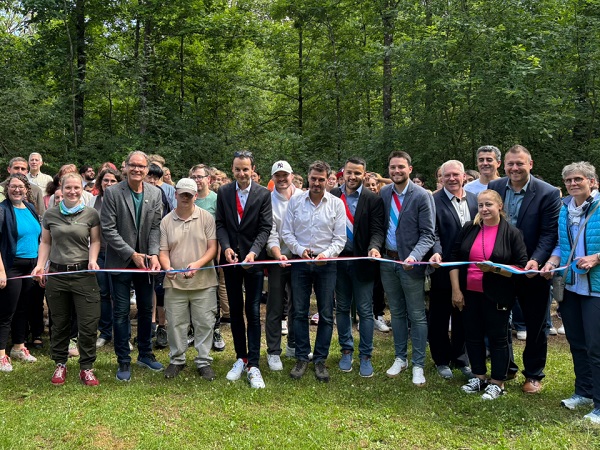 Credit: © Dan Petry
Credit: © Dan Petry
Luxembourg's Ministry of the Environment, Climate and Biodiversity has announced the inauguration of the "Mardellepad" nature trail in Mertzig.
On Wednesday 9 July 2025, the municipality of Mertzig, in collaboration with the Environment Ministry, inaugurated the new Mardellepad nature trail, built in the Säitert forest - an "exceptional" natural site integrated into the European Natura 2000 network.
The Mardellepad is a trail of approximately 2.5 km, developed by the LIGNAFOR design office in collaboration with OpderSchock, the Nature and Forestry Agency, the Environment Ministry, the municipality of Mertzig and the Natura 2000 coordinator of the Atert-Warkdall Steering Committee. The ministry said this educational trail, located in the heart of nature, aims to raise awareness among people of all ages about the richness of local biodiversity. It is particularly aimed at people with mental health issues, offering them an independent and adapted discovery of the natural world. Explanatory panels in easy-to-understand language, intuitive signage with visual symbols and emblematic animals of the area and a map including first aid points are designed to ensure a peaceful visit for visitors with special needs.
The trail is freely accessible and open at all times. It is recommended to allow between one and two hours to fully enjoy it.
The Mardellepad trail is described as "a true sensory and educational adventure". The route invites all visitors to "discover the forest in a fun, educational and inclusive way".
The interactive stations address topics such as the ecological value of the Säitert forest, the objectives of European protection (Natura 2000), an auditory exploration of the local fauna and the importance of sinkhole ponds (mardelles) for amphibians.
The Säitert forest, covering approximately 45 hectares, is an integral part of the Natura 2000 network established by the European Union to protect habitats and endangered species. It features natural oak and beech forests, wetlands and various protected species, such as the Great Crested Newt (Triturus cristatus), Bechstein's Bat (Myotis bechsteinii) and the Greater Mouse-Eared Bat (Myotis myotis). These species depend on old-growth forests, the presence of dead wood, wetlands and a calm environment to thrive and reproduce.
Habitats of community interest include the natural eutrophic lakes and bodies of water with vegetation in the Magnopotamion or Hydrocharition (3150), as well as the beech forests of Luzulo-Fagetum (9110) and Asperulo-Fagetum (9130), whose favourable conservation status must be maintained or restored. The site also ensures the preservation of biotopes under national protection, including mixed oak stands (BK23), standing waters (BK08) and stands of deciduous trees and pioneer forests (BK13).
The ministry added that, thanks to its natural wealth, the Säitert site constitutes "a remarkable example" of ecological conservation and sustainable forest management at the national and European levels.








